Maintain clear, reliable identification through every sterilization cycle. These label constructions are engineered to hold strong and stay legible through gamma irradiation, heat, and chemical exposure. From pharmaceutical packaging to surgical tools and labware, each label is designed to meet the demands of your process. Support traceability and compliance with materials that perform where others fail.
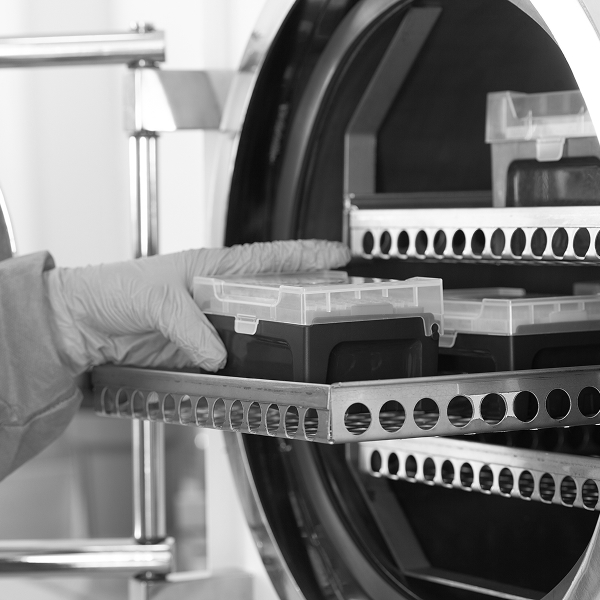
Labels that fail during sterilization can compromise traceability, regulatory compliance, and product safety. These label constructions are built to endure sterilization processes without losing adhesion, distorting, or fading. Whether exposed to radiation, steam, heat, or chemical sterilants, the right materials protect your identification through every cycle.
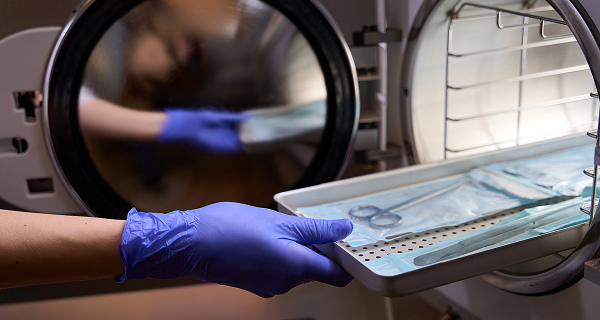
Sterilization methods place intense demands on label materials, adhesives, and print surfaces. From radiation exposure to high heat and chemical contact, each process requires specific resistance properties to ensure label integrity. These solutions are designed for compatibility across a range of sterilization techniques and industries.
Gamma irradiation uses high-energy gamma rays, typically from cobalt-60, to sterilize products by breaking down microbial DNA. This method is effective for penetrating sealed packaging and dense materials, making it widely used for medical devices, pharmaceuticals, and labware. These labels must resist radiation-induced degradation.
E-beam sterilization uses a focused beam of accelerated electrons to destroy microorganisms on product surfaces and packaging. It offers faster processing times than gamma irradiation but with less penetration depth. Label materials must be engineered to withstand radiation exposure without embrittlement, discoloration, or adhesive failure.
Ethylene oxide gas sterilization operates at low temperatures, making it ideal for heat-sensitive products like medical devices and electronics. The gas penetrates packaging and complex geometries, eliminating microbes without damaging the product. Labels used with EtO sterilization require chemical-resistant adhesives and coatings.
Autoclave sterilization uses high-pressure saturated steam, typically at 121°C to 134°C, to kill microorganisms through heat and moisture. This method is common for surgical tools, labware, and reusable medical devices. Labels must be designed with heat-stable adhesives and face stocks to withstand both temperature and humidity.
Dry heat sterilization exposes products to high temperatures, often above 160°C, without moisture. It is used for materials that might corrode with steam or require deep heat penetration, such as glassware or metal instruments. Labels must maintain dimensional stability and adhesive performance through prolonged heat exposure.
Chemical sterilization with liquid agents like peracetic acid, alcohols, or glutaraldehyde is often used for surface disinfection of heat-sensitive equipment. These chemicals can degrade adhesives, films, and printed images if materials are not properly selected. Chemically resistant label constructions prevent swelling or adhesive failure.
Sterilization challenges both the physical durability of the label and the chemical stability of its components. Heat, radiation, and chemical exposure can weaken adhesives, distort face stocks, or degrade printed images if materials aren’t properly selected. Choosing the right combination of face stock, adhesive, coating, and print method is critical for maintaining reliable identification through the entire sterilization process.
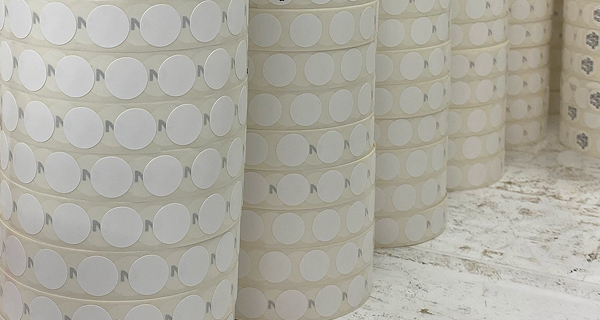
Radiation exposure can weaken polymers and degrade printed images if the materials are not designed to withstand gamma or E-beam sterilization. Radiation-stable face stocks and inks maintain structural integrity and print clarity through these cycles, supporting reliable identification without cracking, embrittlement, or fading.
Heat-based sterilization methods like autoclaving and dry heat expose labels to extreme temperatures, often combined with moisture and pressure. Standard adhesives can soften, flow, or degrade under these conditions, leading to label failure or adhesive residue. High-heat adhesive systems are formulated to maintain bond strength at elevated temperatures without losing cohesion or adhesive properties.
These adhesives resist softening and stay firmly bonded to plastics, glass, and metals throughout sterilization and subsequent handling. Coatings and laminates also play a key role in protecting printed images from heat-induced blurring, smudging, or discoloration. Polyimide face stocks and heat-stable coatings help preserve label shape and readability through repeated sterilization cycles. Together, these materials ensure that identification remains intact even under sustained thermal stress.
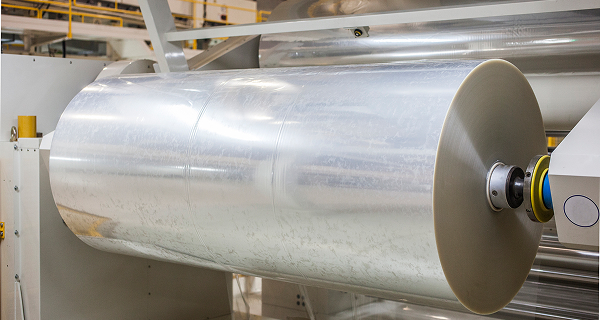
Specialty coatings on face stocks improve print receptivity by creating surfaces that bond effectively with thermal transfer ribbons and other imaging technologies. Some coatings include crosslinking agents that chemically react with ribbon inks to enhance durability, helping prevent smudging, abrasion, or fading through sterilization processes. These pre-print coatings play a critical role in ensuring clear, scannable barcodes and text that remain intact after exposure to heat, radiation, or chemicals.
Adhesive migration occurs when components within the adhesive system leach, bleed, or shift under heat, radiation, or chemical exposure. Low-migration adhesive formulations are engineered to keep these components stable and in place, preventing bond failure, contamination, or label lifting. Maintaining adhesive integrity is essential for sterilization-safe labels, especially on plastics, glass, and metal surfaces where residue transfer could compromise product sterility or traceability.
Thermal sterilization cycles introduce heat, humidity, and pressure that can cause label materials to shrink, stretch, or distort. Films with high dimensional stability maintain consistent shape and size under these stresses, preserving adhesion and barcode readability throughout the sterilization process. Proper polymer selection and film orientation prevent curling, wrinkling, or delamination, supporting reliable performance across repeated sterilization cycles.

Effective sterilization-safe labeling depends on rigorous material testing that simulates real sterilization conditions. Testing methods verify that the label construction—face stock, adhesive, coatings, and printed image—can endure the specific stresses of radiation, heat, moisture, or chemical exposure.
Sterilization-safe labels are used across a wide range of products, components, and packaging that require contamination control and traceability. From medical tools and pharmaceutical packaging to biomanufacturing equipment and labware, these labels support clear identification through intense sterilization processes. Proper material selection ensures that labels stay in place and remain readable, no matter the shape, size, or surface of the product.
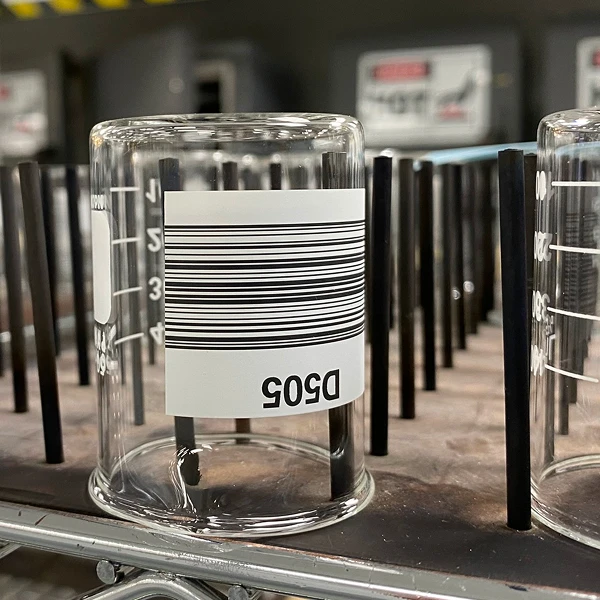
Sterilization-safe labels are applied to products that must survive harsh conditions while maintaining identification accuracy. These labels are engineered for reliable performance on curved, flat, rigid, and flexible surfaces across many sterilized applications. Labels may be exposed directly to gamma radiation, steam cycles, or chemical sterilants depending on the product and process requirements. Adhesive strength, face stock durability, and print stability must all align with the sterilization method and the product material. Applications range from small labware and drug containers to large medical devices and complex biomanufacturing systems.
Surgical instruments and reusable medical tools
Pharmaceutical vials, syringes, and ampoules
Biomanufacturing tubing, ports, and equipment surfaces
Labware such as cryo vials, tubes, and slides
Smooth, nonporous metal surfaces combined with high-heat sterilization can challenge label adhesion. Heat-stable adhesives and durable face stocks prevent peeling, distortion, or discoloration on metal products.
Low surface energy plastics like polypropylene and polyethylene make adhesion more difficult, especially under sterilization stress. Specialized adhesives and surface treatments help maintain secure bonding through heat, radiation, and chemical exposure.
Sterilization-safe labeling plays a critical role in environments where contamination control, traceability, and regulatory compliance are essential. Labels that fail during sterilization risk compromising identification, product integrity, and safety. Medical device manufacturers, pharmaceutical companies, laboratories, and biomanufacturers all depend on sterilization-resistant labels to maintain reliable tracking of products and tools.
These industries often use sterilization methods like gamma irradiation, autoclaving, or chemical sterilants as part of their production, packaging, or quality control processes. The ability of a label to maintain adhesion, legibility, and durability after sterilization directly supports compliance with standards such as FDA, UDI, and ISO requirements.
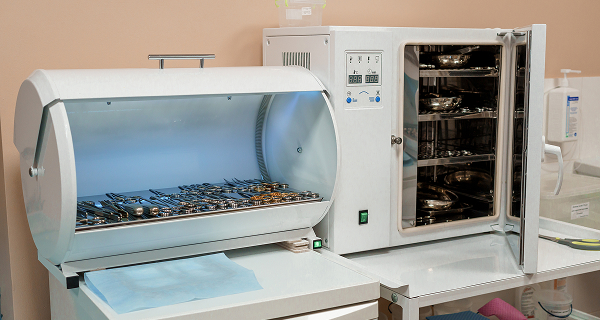
In healthcare environments, sterilization is essential for surgical instruments, reusable devices, and diagnostic equipment. Labels in these settings must withstand autoclave cycles, chemical disinfectants, or low-temperature sterilization methods like EtO gas. Failure of a label can lead to lost identification, putting safety and regulatory compliance at risk.
Pharmaceutical manufacturing often includes sterilization steps to ensure product safety and prevent contamination. Vials, ampoules, syringes, and other drug containers may be exposed to gamma irradiation, autoclaving, or chemical sterilants during production and packaging. Labels must maintain adhesion and legibility.
Biomanufacturing processes—such as cell culture, enzyme production, and fermentation—require sterile environments to prevent contamination and ensure process integrity. Labels for bioreactors, sampling ports, tubing, and containers must withstand sterilization methods like steam-in-place (SIP), clean-in-place (CIP), and gamma irradiation.
Connect with us to explore how our labeling solutions can support your sterilized products. Unlock new efficiencies with our expertise.
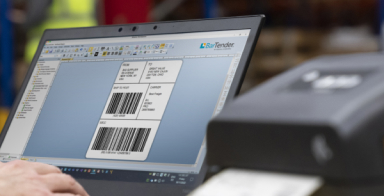
BarTender makes label design and printing simple and efficient. Integrate easily with agricultural systems for compliance and tracking.
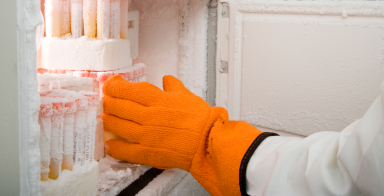
Cryo labels remain durable in extreme cold conditions. Ideal for long-term storage of samples at ultra-low temperatures.
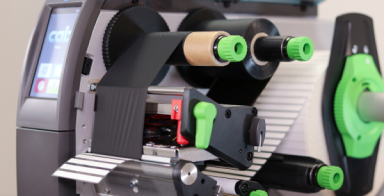
The cab Squix printer delivers precise, high-quality label printing for various applications. It combines versatility and reliability to meet demanding needs.


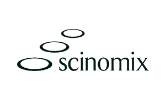




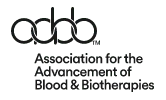
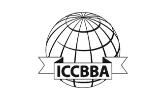



© Computype 2024
© Computype 2024
Take advantage of our volume discounts for bulk orders. Reach out to us for a personalized quote tailored to your needs.
"*" indicates required fields